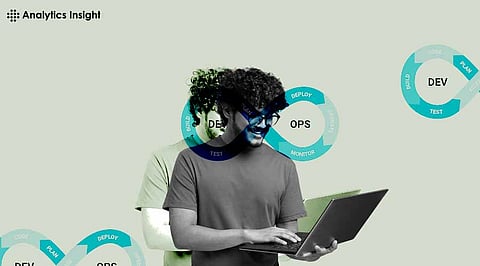

The rise of DevOps has fundamentally changed the way organizations develop, deploy, and maintain software. As more companies adopt DevOps practices to accelerate their software delivery and improve product quality, the need for robust monitoring tools has become increasingly important. Monitoring is a critical component of any DevOps strategy, providing teams with the insights needed to ensure the reliability, performance, and security of their applications and infrastructure. In this article, we’ll explore the top DevOps monitoring tools for 2024 that can help your team achieve continuous monitoring and observability.
DevOps monitoring tools are essential for several reasons:
1. Continuous Monitoring: These tools enable continuous monitoring of applications, infrastructure, and networks, providing real-time insights and alerts.
2. Performance Management: They help identify and resolve performance bottlenecks, ensuring applications run smoothly.
3. Incident Management: Monitoring tools provide early warning systems for detecting anomalies, reducing downtime, and maintaining system reliability.
4. Security Compliance: They monitor for potential security breaches or vulnerabilities, helping maintain compliance with industry regulations.
5. Observability: Advanced monitoring tools offer observability, providing deeper insights into system behavior and application health.
Prometheus is an open-source monitoring solution widely adopted for its powerful capabilities and ease of integration with Kubernetes. It provides a flexible query language (PromQL) for querying metrics and has a multi-dimensional data model.
Time-series database optimized for high availability.
Multi-dimensional data model for storing metrics.
Built-in alerting manager for real-time alerts.
Easy integration with Grafana for advanced visualizations.
Support for multiple data sources and custom metrics collection.
Prometheus is particularly well-suited for cloud-native environments and microservices architectures, making it a preferred choice for many DevOps teams.
Datadog is a cloud-based monitoring and analytics platform that offers comprehensive monitoring for cloud infrastructure, applications, and logs. It provides out-of-the-box integrations with over 450 services and tools.
Real-time monitoring with customizable dashboards.
Log management and APM (Application Performance Monitoring) capabilities.
Integrated security monitoring and compliance checks.
AI-driven alerts and anomaly detection.
Support for distributed tracing to monitor complex application environments.
Datadog’s unified platform makes it a popular choice for organizations seeking a comprehensive monitoring solution across their entire tech stack.
New Relic is a popular monitoring tool that offers a full suite of observability solutions, including APM, infrastructure monitoring, logs, and synthetics. It is known for its ease of use and powerful analytics capabilities.
Full-stack observability with an integrated platform.
Real-time metrics and advanced alerting.
Detailed transaction traces and code-level diagnostics.
AI-driven insights and root cause analysis.
Rich visualization and reporting tools.
New Relic is ideal for teams looking for a unified observability platform that can provide deep insights into application performance and user experience.
Grafana is an open-source analytics and monitoring tool that integrates with various data sources, including Prometheus, InfluxDB, Elasticsearch, and more. It is widely used for its powerful visualization capabilities and flexibility.
Customizable dashboards with various visualization options.
Integration with a wide range of data sources.
Alerting and notification system.
Support for plugins and community-driven extensions.
Annotations for tracking changes and incidents.
Grafana’s flexibility and integration capabilities make it a popular choice for DevOps teams looking to build custom monitoring solutions.
Nagios is a well-established, open-source monitoring tool that offers a comprehensive set of features for monitoring applications, network protocols, operating systems, and system metrics.
Extensive monitoring capabilities for servers, networks, and applications.
Configurable alerting system with escalation capabilities.
High availability and failover clustering support.
Large plugin ecosystem for extending functionality.
Active community and commercial support options.
Nagios is known for its reliability and is often used in enterprise environments that require a stable, tried-and-tested monitoring solution.
Splunk is a powerful data analytics and monitoring tool that provides real-time insights into machine data. It offers a range of solutions for IT operations, security, business analytics, and more.
Advanced machine learning and AI-driven analytics.
Comprehensive log management and analysis.
Real-time monitoring with custom dashboards.
Security Information and Event Management (SIEM) capabilities.
Integrations with various third-party tools and services.
Splunk’s robust analytics capabilities make it ideal for organizations that need to monitor large volumes of data across diverse environments.
Elastic Stack, commonly known as ELK Stack, consists of Elasticsearch, Logstash, and Kibana. It is an open-source suite used for logging, monitoring, and analysis.
Powerful search and analytics engine (Elasticsearch).
Flexible data ingestion and processing (Logstash).
Intuitive data visualization (Kibana).
Real-time alerting with Elastic Alerting.
Scalable architecture for large-scale deployments.
ELK Stack is particularly well-suited for organizations looking for a flexible and scalable solution for log management and monitoring.
Choosing the right DevOps monitoring tool depends on several factors, including the size and complexity of your infrastructure, the technologies you use, and your specific monitoring needs. Each of the tools listed above offers unique features and capabilities that cater to different aspects of DevOps monitoring. By carefully evaluating these tools based on your organization's requirements, you can ensure that you select the best solution for achieving continuous monitoring and observability in your DevOps environment.
1. What is DevOps monitoring?
DevOps monitoring involves using tools and practices to continuously monitor applications, infrastructure, and networks to ensure reliability, performance, and security.
2. Why is monitoring important in DevOps?
Monitoring is crucial in DevOps for detecting issues early, managing performance, ensuring security compliance, and maintaining overall system health and reliability.
3. Which are the best DevOps monitoring tools?
Some of the best DevOps monitoring tools include Prometheus, Datadog, New Relic, Grafana, Nagios, Splunk, and ELK Stack.
4. What is observability in DevOps?
Observability refers to the ability to measure the internal state of a system by analyzing its outputs, enabling teams to understand and improve application performance and reliability.
5. Can these tools be integrated with other DevOps tools?
Yes, most DevOps monitoring tools offer integration capabilities with other DevOps tools and platforms to provide a seamless workflow.
